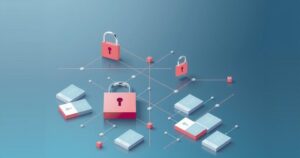Real Risk Is Employees Using AI Inside the Network, Says Verizon Business Exec
- Cybersecurity landscape is rapidly shifting with AI integration.
- Verizon Business leverages AI for data analysis and threat detection.
- AI’s role necessitates new governance and compliance frameworks.
- India’s cybersecurity talent positions it for global leadership.
- The evolution of AI tools calls for improved risk management.
The Shift to Agentic AI in Enterprises
The world of cybersecurity and enterprise technology is swirling with change, especially as Artificial Intelligence (AI) takes center stage in the daily operations of businesses everywhere. In sectors including manufacturing, logistics, and telecommunications, the complexity of systems—and the risks tied to them—are on the rise, pushing companies to seek out scalable and secure AI solutions. Verizon Business, a key player in the Asia-Pacific region, is deeply entrenched in these conversations, operating large-scale security operations that utilize AI for various crucial tasks such as data analysis, threat detection, and automating routine tasks in security workflows.
Redefining Security in the AI Era
Robert Le Busque, who’s the Regional Vice President for Asia Pacific at Verizon Business, recently shared insights with TechCircle about how agentic AI is influencing enterprise-level infrastructures and cybersecurity frameworks. He pointed to three primary focuses for companies adopting agentic AI. First, the entire technology infrastructure needs reevaluation. During the AI training phase, data flows from the organization into the AI systems, but as AI starts to perform tasks, this data flow shifts to a more bi-directional path. It further evolves when the AI is employed for automation, integrating seamlessly into existing systems and workflows; this iterative process is one that enterprise leaders need to account for in their planning for infrastructure changes.
AI Applications in Cyber Defense Beyond Support
Then, the issue of security comes into play. As AI rolls out, it introduces a suite of unique governance and compliance needs. Traditional cybersecurity models need an overhaul to accommodate the specific requirements of AI systems. Organizations now face the challenge of managing data securely both coming in and out, especially as interactions with public Large Language Models (LLMs) can expose sensitive information. It’s already not enough to simply prevent data leaks—businesses must ensure safe connections to these external models, avoid possible intrusions from untrustworthy data, and protect customer data marshaled within their systems. Therefore, it’s crucial for companies to reassess their GRC frameworks and strengthen them for AI technologies.
India’s Role in AI-Driven Cybersecurity
Verizon is leveraging agentic AI in a wide range of areas, particularly when it comes to bolstering cybersecurity for large enterprises. With nine security operations centers scattered around the world, they analyze an astounding amount of data—29 trillion raw incident logs each year. From that data, they generate about 3.5 million alerts, with roughly 500,000 translating into actual security incidents annually. The blend of human skills, automated systems, and AI technology ensures they can handle these massive data volumes effectively. This essential synergy between skilled analysts who interpret this information and AI tools that flag potential dangers allows Verizon to track threats and act swiftly when required. It’s this combo of people and technology that allows them to maintain vigilance and proactively address the myriad of emerging cyber threats.
Interplay of Private 5G Networks and AI
When discussing AI’s role in the cybersecurity landscape, it’s essential to recognize India’s position. Currently, India boasts a rich talent pool that’s deep and capable in cybersecurity, putting it in a strong position to lead not just in the Indo-Pacific but on a global scale. The adoption of AI technologies in India mirrors past technology adoption patterns, focusing on how experienced professionals can utilize these tools for deeper insights and quicker responses to cyber incidents. As the security landscape grows ever more complex, having a robust analyst community is vital in ensuring enterprises are equipped to develop new cybersecurity frameworks that leverage AI effectively.
AI in the Hands of Bad Actors
The expansion of attack surfaces brought about by more devices connecting to networks—especially in sectors like IoT and logistics—presents its own set of challenges. Companies now need to focus on network architecture, particularly when integrating next-gen networks like private 5G. This deployment encourages practices like segmentation; a method whereby different network portions are isolated to minimize risk. When one section is compromised, quick isolation can prevent wider systemic contagion. With the sheer volume of logs generated from all these connected devices, mature security operations that combine machine learning and automation are essential for staying ahead of potential threats and responding promptly to them.
Building Trust in Autonomous AI Systems
And as with all technology, there’s a flip-side. Cybercriminals are not sitting idle. Every year, Verizon publishes its Data Breach Investigations Report, which provides key insights into the trends in cybersecurity threats, including how bad actors are using AI to enhance their attacks. Deepfake technologies are emerging as a threat, even if they are not yet pervasive. More often, criminals use AI, particularly large language models, for phishing and email scams, writing much more compelling messages that trick users into compromising their systems. Security practices must keep pace with evolving threats, ensuring user training and incident monitoring are robust and up to date.
Measuring the ROI of Agentic AI Spending
Implementing AI also requires a distancing of governance, risk, and compliance processes from older models, especially concerning autonomous decision-making. Decision impacts, and the metrics by which success or failure are gauged, must be clearly understood and quantified. This ties directly into governance issues, particularly when discovering that about 15% of employees accessed external LLMs from within the corporate network without following established policies. It begs the question of how organizations manage risks and what measures are in place to prevent unnecessary data exposure. This is a governance issue that needs addressing urgently, and organizations are encouraged to take a thorough look at internal policies as they increasingly incorporate AI into their frameworks.
The Road Ahead for AI in Cybersecurity
Finally, when enterprises weigh the investment in agentic AI solutions, they often seek tangible KPIs and expected outcomes that justify their expenditure. This heavily depends on individual business needs and context and establishing a financial governance model can help tailor these use cases to specific scenarios. Benefits have been recognized in many firms through a standardized financial model that supports consistent evaluations across various use cases and spheres of technology deployment. A robust business case is essential to any technology investment, and especially so with AI, driving it home that success can and should be measured across many metrics and tailored to company objectives.
As AI continues to weave itself into the fabric of enterprise technology, organizations face both exciting opportunities and complex challenges. Verizon’s insights suggest a cautious, well-planned approach is necessary for successful AI integration, especially in cybersecurity. Businesses must navigate risks, implement strong governance frameworks, and leverage both human expertise and AI-driven technology in smart ways to truly thrive in this new landscape. The road ahead will require continual adaptation, investment in talent, and an unwavering focus on secure and responsible technology deployment.




